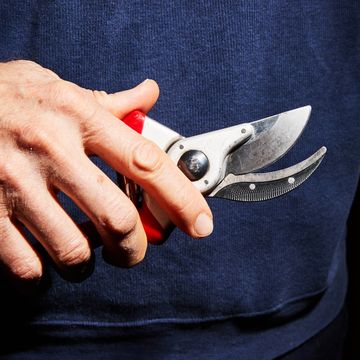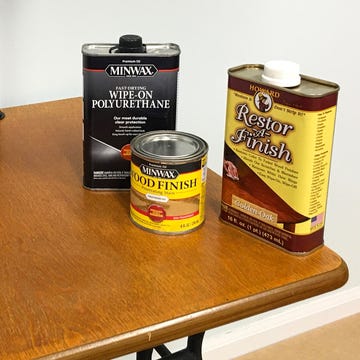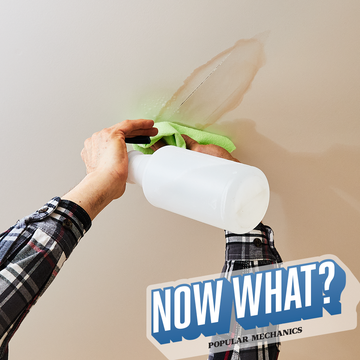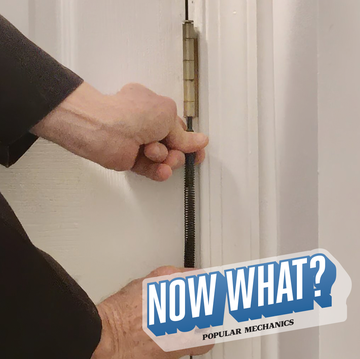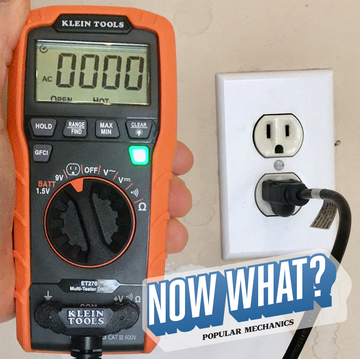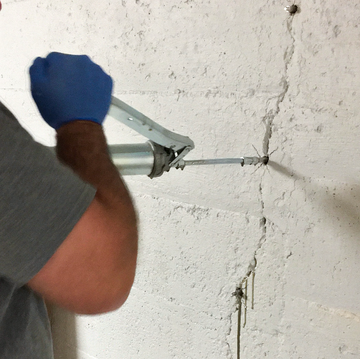How to Start a Container Garden in any Amount of Space
Whether you want fresh flowers, veggies or simply some greenery, spruce up your terrace, balcony, deck or other space. Nearly everyone can enjoy the benefits of organic gardening. Build your own container garden that fits whatever size space you have.
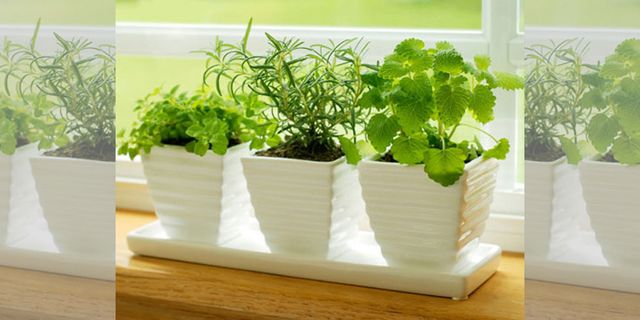
Whether you want fresh flowers, veggies or simply some greenery, spruce up your terrace, balcony, deck or other space. Nearly everyone can enjoy the benefits of organic gardening.
Gardens for All
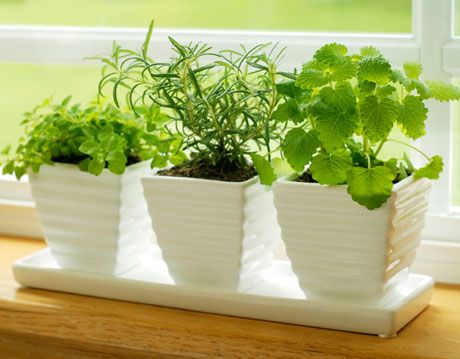
Organic gardening is a great way to enjoy fresh, healthful produce, as well as get outdoors and learn a little something about nature. But not everyone has the benefit of plantable land, or even access to community gardens. Luckily, there's an easy, time-tested way to bring a cheery splash of color or handful of fresh veggies right to your doorstep: container gardening.
According to the book 1000 Gardening Questions & Answers by Leslie Land (The Daily Green's garden blogger), there are many benefits of the practice, as well as challenges.
Raising Healthy Plants in Containers
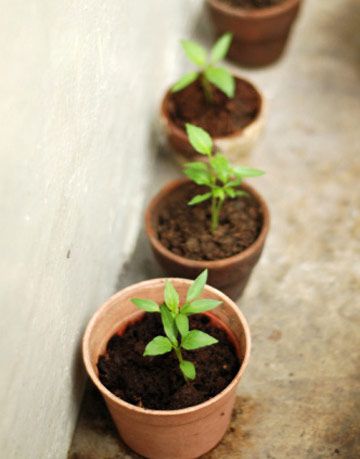
Many different types of plants can do well in containers, though there are some points to keep in mind. It's usually more stressful for plants to be in containers versus in the ground, and they tend to dry out much quicker, so you'll have to water them often. Potted plants are also more susceptible to temperature changes, either too hot or too cold.
It's also tempting to crowd plants closer together in containers, particularly for that full look, although that can stress them out. It's also important to fertilize potted plants regularly, since they have less opportunity to receive nutrients from the Earth. Either use a time-release fertilizer such as Osmocote or add a quarter-strength dose of soluable fertilizer every third or fourth time you water.
Remember that the smaller and more tightly packed the container, the more water it will need. The old gardener's rule of "1 inch of rain or watering per week" must often be exceeded. However, there are also plants that are less water intensive, such as morning glories, nasturtiums, poppies, calliopsis and haageana zinnias.
Proper Pots
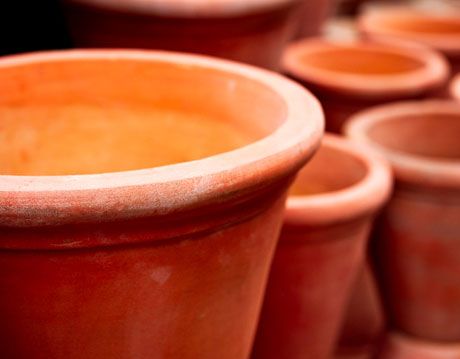
In order to retain moisture and provide more nutrients and a stable environment, it's almost always best to choose as large a pot as possible. The material of the pot itself isn't terribly important, though each type has its advantages in terms of cost, weight, durability and beauty. Pay attention to your potting mix: it should be light and fluffy, like Pro-Mix from a nursery. It should be replaced if it shrinks down or if a thorough watering takes too long to percolate, or if water runs right through, a sign that the soil's packed tight and can't absorb anything. Soil used in containers doesn't last forever, and will need to be changed or at least heavily fortified with organic matter and fertilizers after a season.
Remember too that plants often have different requirements for moisture and fertilizer. So it's a good idea to choose compatible plants, just as anyone who has ever kept an aquarium knows to select fish that get along. It's also possible to nest smaller containers within a larger one, so each plant can get more targeted doses of resources.
It's worth mentioning that many tropical houseplants can be placed outside during the warm months, where they add beauty and charm to outdoor spaces.
Rediscover Window Boxes
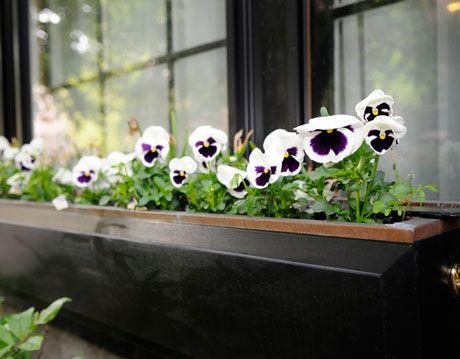
According to 1000 Gardening Questions & Answers, most garden or hardware shops can help you get set up with a window box (measure the width and length of your sill before you browse). It's also a good idea to check with materials refurbishers, such as Habitat for Humanity's ReStores. Window boxes come in a number of different materials — wood, plastic (including recycled), terra cotta, fiberglass, etc. — although Land suggests steering clear of metal, which rusts and can damage fragile plants by retaining too much heat. Whatever you use, make sure the box is secured to the sill with bolts or wire.
Then cover the bottom with a layer of landscape fabric to hold the soil in place, while allowing excess water to drain. Fill the box about three-quarters full with soil, then stir in several trowels of perlite and organic matter, such as leaf mold, properly aged manure or compost. For the most attractive look, plant a mix of bushy, tall and draping plants.
Used Shipping Pallet Garden
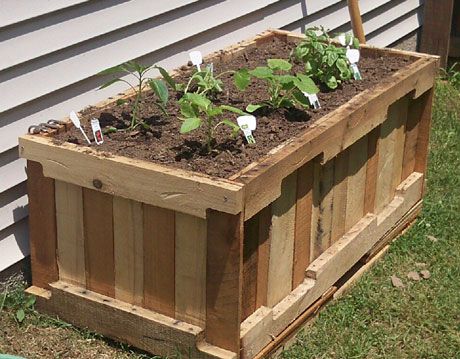
Jeffrey Davis of the Fun Times Guide to Living Green has a great post on building a container garden out of used shipping pallets. Such pallets are widely available, and assembly is a quick task, thanks to Jeffrey's instructions. If you don't have pallets you might try other scrap wood you have lying around or can salvage.
Whimsical Pots

As the pallet example shows, one needn't necessarily invest in a traditional clay pot or window box to grow things. In fact, many seasoned container gardeners prefer to mix in the occasional odd object: the more unusual, the better! This could be an old boot, a busted watering can, a used tire, a piece of worn furniture, a broken microwave...whatever you have lying around.
Just be sure to fill your unique object with good soil, and make sure excess water can drain through, particularly if your plant will get rained on.
How to Make Potting Soil
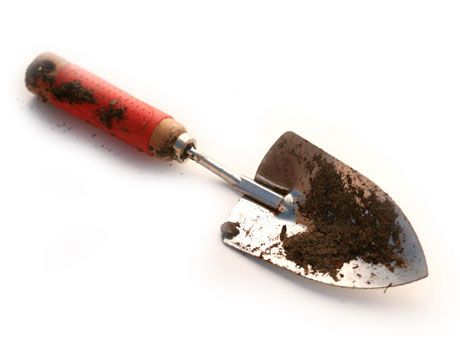
There are many recipes for good potting soil, including tweaks for specific plants and regions. Here's an all-purpose container soil from Leslie Land's 1000 Gardening Questions & Answers:
1 part perlite
1 part moisture-retentive filler such as shredded coconut fiber or peat moss
1 part all-purpose potting soil
1 part compost or composted cow manure
Don't forget to fertilize and water as your plant grows!
Flowers That Thrive in Containers
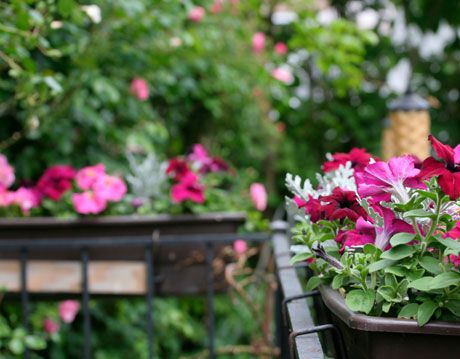
Try some of these beauties:
Sun-lovers: marigolds, petunias (pictured), geraniums, African daisy, California poppy, verbena, globe amaranth, strawflower, love-in-a-mist, calendula, gazania, nasturtiums, licorice plant, dwarf dahlias, heliotrope, lantana, miniature roses, zinnia, artemisias, lavender, coreopsis
Partial Shade: ageratum, begonia, ferns, fringed bleeding heart, lady's mantle, wishbone flower, English ivy, coleus, Boston fern
Shade Tolerant: fuchsais, begonias, Jacob's ladder, coral bells, dead nettle, small hostas, wishbone flower, impatiens, browallia, vinca, English ivy
Veggies That Do Well in Containers
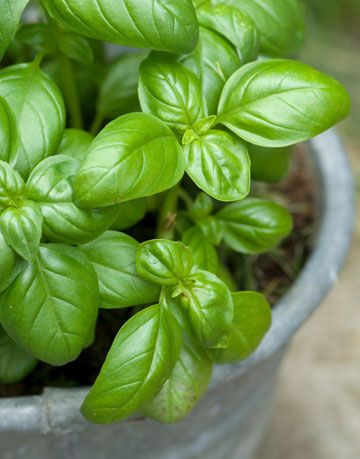
Grow your own food, right on your patio or balcony! Yields are often not as good as from true garden plots, but you gain flexibility. Shallow-rooted veggies like radishes and lettuce can be grown in window boxes. Tomatoes need big tubs, at least 16 inches high, wide and deep. In general, veggies need rich soil that drains well.
These veggies also do particularly well in containers: Swiss chard (multicolored varieties are especially pretty!), "patio" cherry tomatoes, fennel, dill and many other herbs, including rosemary, thyme, parsley, cilantro, oregano, mint, basil (pictured), bay and much more.
High Winds and Screens
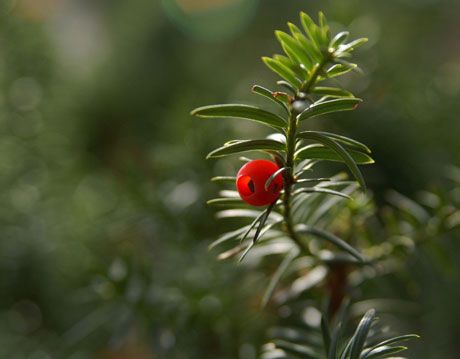
If you have a windswept area you'll have to take extra care with container plants: you don't want your carefully tended veggies to end up as projectiles! So make sure your plants are well anchored (large pots often do the trick, especially if they're made of heavy terra cotta). Wind is drying, so keep an extra eye on soil moisture, including through the winter if you leave your plants out.
There are some evergreens, in every size from tree to groundcover, that tend to do particularly well in high winds, and they have the added bonus of keeping their color all year long. Try rockspray cotoneaster, Japanese holly, wintercreeper, yews (pictured), wild ginger or wintergreen.
Here's another tip: tall plants in pots (or vines trained up trellises) make great screens, hiding trash cans or dividing up outdoor space into "rooms." It's not hard to make a trellis out of reclaimed materials. It's also a good idea to place smaller pots at the base of larger ones, and to have a mix of different heights and sizes, to add variety and interest.
Drought-Tolerant Rooftop Gardens
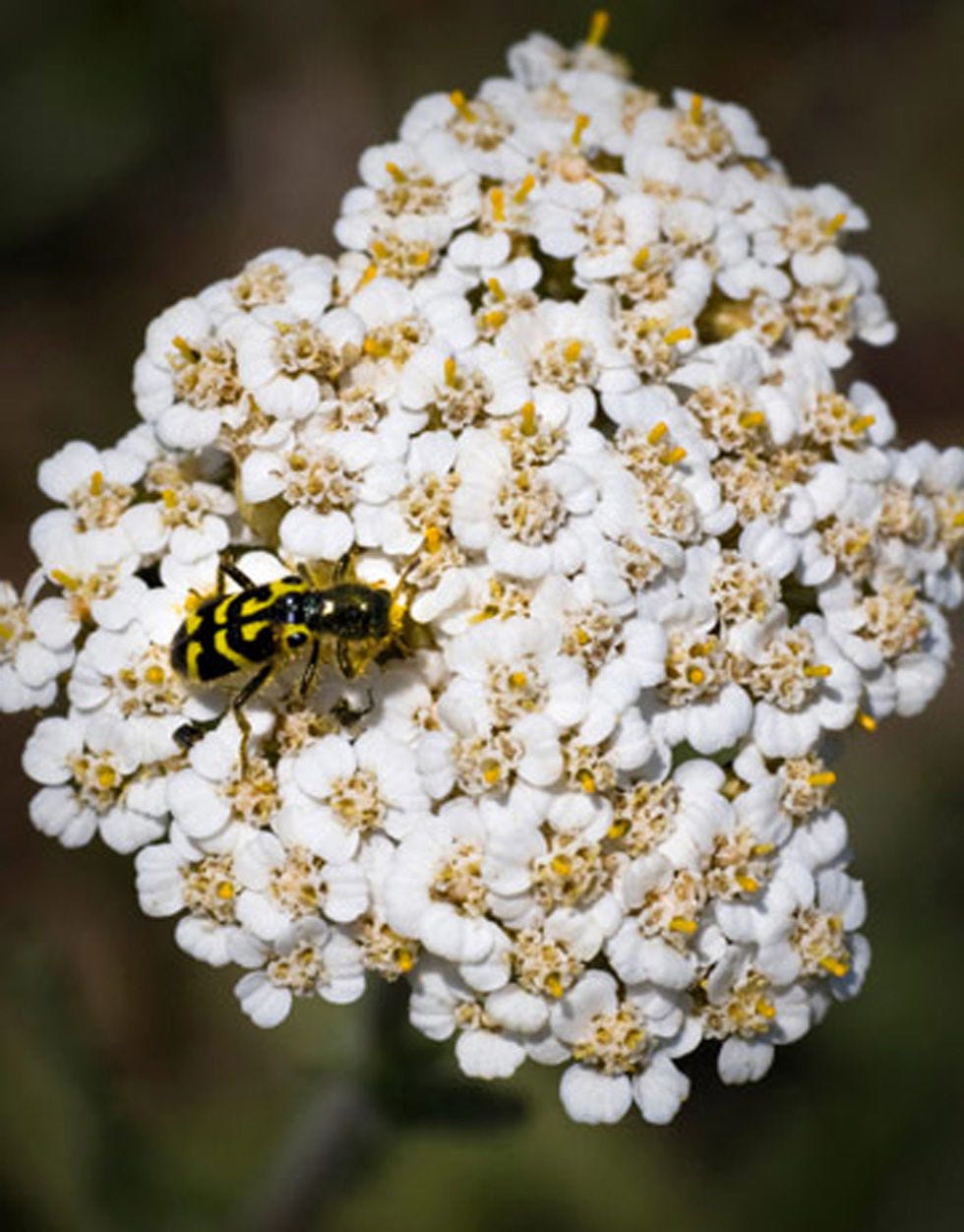
If you live in a dry area, or won't be available to keep a close eye on your plantings, consider going with drought-tolerant plants, both for patio containers and for larger-scale rooftop gardens. Here are some examples:
Herbaceous perennials: artemisia, spurge, coreopsis, sedum, moss mullein, yarrow (pictured) and yucca
Woody plants: barberry, beach plum, cotoneaster, shrub honey locust, tamarisk, rugosa rose, juniper and yew
Get a Secret Garden Look
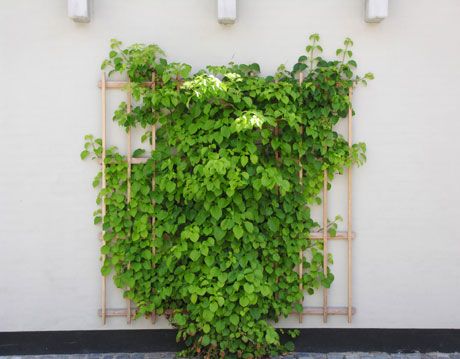
Get an enchanted feel, or just take advantage of limited space, with espaliers, which are woody plants trained to grow flat against a trellis or wall (often in a fan shape). The technique is believed to date from ancient Egypt, and has long been popular in Europe, particularly in formal and royal gardens.
It isn't difficult to train an espalier, though the process usually takes a few years. Any slow-growing shrub or herb can work, as long as the container is large enough. Many nurseries also sell plants in the form. Look for cotoneaster, crab apple, forsythia, holly, juniper, quince and yew as especially fine espaliers.
Get Weepy
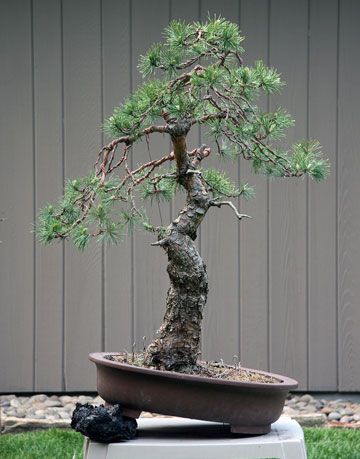
If you've got a lot of space, manage a large building or are feeling particularly ambitious about containers on your roof or patio, you might consider going for an elegant, peaceful look with weeping plants. Avoid weeping willows, however, which are rapid growers. Better choices include weeping varieties of the blue Atlas cedar, Nootka false cypress, willowleaf pear or crab apples or cherries. You can also try bonsai weeping trees, such as this Scots pine.
Be warned, however, that you'll have to "go Jaws" and get a "bigger container," at least 18 inches in each dimension, with bigger being better. You'll also have to prune the trees yearly to keep them from growing too large.
What to Do in Winter
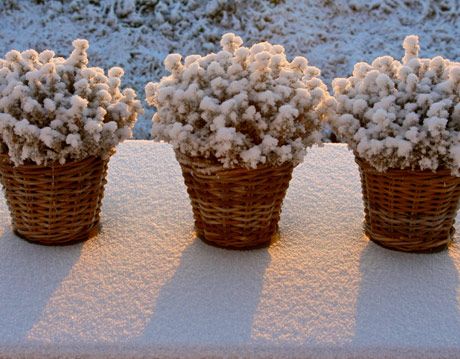
Pots are particularly sensitive to freezing and thawing cycles, which can make plastic brittle and crack clay and even cement eventually. You can store potted perennials in an unheated garage or shed if temperatures stay between 32 and 40 degrees F. Check the soil often and make sure it stays moist (not wet, which can promote rot and suffocate roots).
Huge "estate-size" pots can usually be left out, however, because their mass serves as insulation. If you're working with annuals, empty out small and medium-sized pots and bring them inside when the growing season is done.
To learn more check out 1000 Gardening Questions & Answers by Leslie Land, or visit Leslie's Website (leslieland.com).
Learn More about Organic Gardening
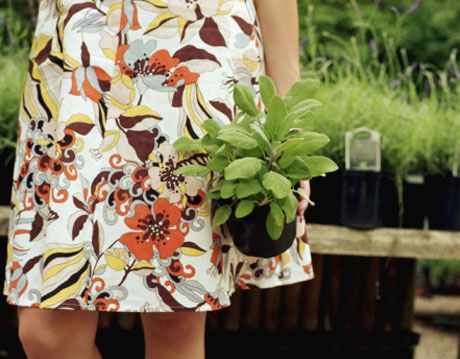
If you have more space, or can join a community garden, you can benefit from the higher yields and less fickle nature of planting directly in the ground.
Vertical Gardens

A number of urban designers are taking container gardening to the next step, with the idea of creating sustainable vertical gardens, or even farms, to revitalize neighborhoods and bring the food to the people. Besides decreasing food miles, urban gardens can sequester carbon dioxide and pollutants and provide natural cooling, as well as relaxing places to hang out in.

Timothy is a lifelong DIY enthusiast who is fixated on smart home tech, beautiful tools, and wrenching on his FJ62 Land Cruiser. He’s the DIY editor at Popular Mechanics and also the founder of the home improvement site, Charles & Hudson, the Webby-nominated family site, Built by Kids, and Tool Crave. When not working, you’ll find him on his board or bike enjoying the LA weather with his family and friends. Follow him on Instagram and Twitter.
Watch Next


How to Maintain Your Generator

Stand-by Power: Eco Flow’s Smart Home Panel 2

The Right Way to Use a Fire Extinguisher
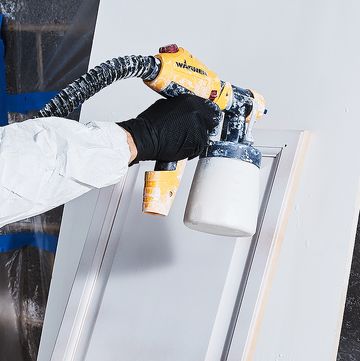
How to Spray-Paint Kitchen Cabinets
